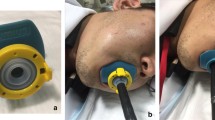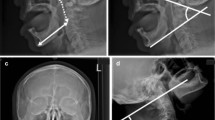Abstract
The more progress achieved in endoscopy, the more superficial cancers in head and neck region have been diagnosed. There are, however, some areas difficult to observe, particularly the hypopharynx, due to closure of this space. Examination of hypopharynx form an essential part of head and neck examination especially in the suspected malignancies as well as in the cases with unknown primary. As the flexible fiber-optic nasopharyngolaryngoscopy forms an essential part of examination of hypopharynx, the present study aims to evaluate the effectiveness of various manoeuvres devised to aid in better visualization of the hypopharynx. The present prospective study is an observation carried out on 30 patients, which had been followed up for hypopharyngeal or laryngeal disease, in the OPD of the department of Otorhinolaryngology and head and neck surgery in Gandhi Medical College and associated hospital, Bhopal, M.P. In the present study, authors compared the visibility of subsites of hypopharynx in 30 patients undergoing trans nasal flexible fibre optic endoscopy in normal seated position and with head torsion, valsalva manoeuvre and the Killian position. The authors concluded that the above mentioned manoeuvres facilitated the visualization of the entire circumference of the hypopharynx during endoscopic examination, are non invasive and easy to perform and so should be included as a part of routine examination while performing flexible fibre optic endoscopy.

Similar content being viewed by others
References
Muto M, Nakane M, Katada C et al (2004) Squamous cell carcinoma in situ at oropharyngeal and hypopharyngeal mucosal sites. Cancer 101:1375–1381
Watanbe A, Taniguchi M, Tsujie H, Hosokawa M, Fujita M, Sasaki S (2008) The value of narrow band imaging endoscope for early head and neck cancers. Otolaryngol Head Neck Surg 138:446–451
Joo YH, Cho KJ, Park JO (2012) Role of larynx preserving partial hypopharyngectomy with and without post operative radiotherapy for squamous cell carcinoma of hypopharynx. Oral Oncol 48:168–172
Tsunoda A, Ishihara A, Kishimoto S, Tsunoda R, Tsunoda K (2007) Head torsion technique for detailed observation of larynx and hypopharynx. J Laryngol Otol 121:489–490
Spraggs PD, Harries ML (1995) The valsalva manoeuvre to improve visualization of the hypopharynx during flexible nasopharyngoscopy. J Laryngol Otol 109:863–864
Hillel AD, Schwartz AN (1989) Trumpet manoeuvre for visualization and CT examination of the pyriform sinus and retrocricoid area. Head Neck 11:231–236
Purser S, Antippa P (1995) Manoeuvre to assist examination of the hypopharynx. Head Neck 17:389–393
Colquhoun-Flannery W, Davis A, Carruth JA (2000) Improving the endoscopic view of the hypopharynx with anterior neck traction during the trumpet manoeuvre. J Laryngol Otol 114:283–284
Williams RS, Lancaster J, Karagama Y, Tandon S, Karkanevatos A (2004) A systematic approach to the nasendoscopic examination of the larynx and hypopharynx. Clin Otolaryngol Allied Sci 29:175–178
Freeman SR, Keith AO, Aucott W, Kazmi N, Nigam A (2007) Comparison between two valsalva techniques for improvement of hypopharyngeal nasendoscopy: a preliminary communication. Clin Otolaryngol 32:488–491
Ni XG, Cheng RR, Lai SQ et al (2013) Novel Laryngoscopic strategies to improve evaluation of the site and extent of primary hypopharyngeal tumours. J Laryngol Otol 127:882–889
Sakai A, Okami K, Sugimoto R, Maki D, Iida M (2010) New techniques to detect unknown primaries in cervical lymph node metastasis. Laryngoscope 120:1779–1783
Acknowledgements
The authors are grateful to Dr. Ulka Shrivastav, Dean, Gandhi Medical College and Dr. D. K. Pal, the Superintendent, Hamidia Hospital for giving the permission to carry out the present study and their constant and invaluable guidance. We express our profound gratitude and heartfelt thanks to Dr. Smita Soni, the Associate Professor in the department of otorhinolaryngology, for her keen interest, affectionate encouragement and critical suggestions from time to time. A sincere thanks to all the subjects who volunteered for participation in this study.
Author information
Authors and Affiliations
Corresponding author
Ethics declarations
Conflict of interest
The authors declare that they have no conflict of interest.
Ethical Approval
All procedures performed in studies involving human participants were in accordance with the ethical standards of the institutional and/or national research committee and with the 1964 Helsinki declaration and its later amendments or comparable ethical standards.
Informed Consent
Informed consent was obtained from all individual participants included in the study.
Rights and permissions
About this article
Cite this article
Thakur, P., Poorey, V.K. Manoeuvres to Improve Endoscopic Visualization of Hypopharynx. Indian J Otolaryngol Head Neck Surg 69, 93–96 (2017). https://doi.org/10.1007/s12070-016-1040-y
Received:
Accepted:
Published:
Issue Date:
DOI: https://doi.org/10.1007/s12070-016-1040-y




